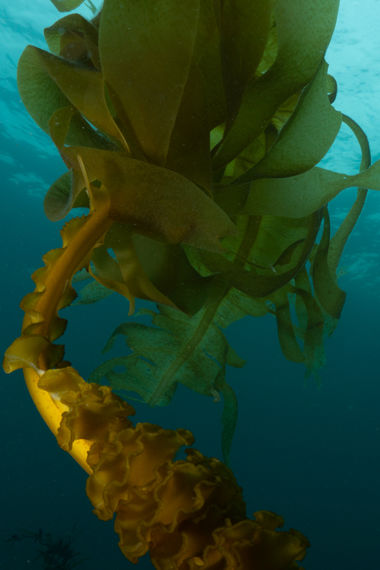Undaria pinnatifida explained

Undaria pinnatifida is a brown seaweed native to Japan. It was introduced to the Southern Hemisphere approximately 30 years ago. Marinova monitors the growth of Undaria seaweed and continues to sustainably harvest wild Undaria from the pristine ocean waters of Tasmania, Australia, and Patagonia, Argentina. Marinova’s harvest sites are located well away from any sources of human, agricultural or industrial contamination.
Undaria inhabits the intertidal zone down to depths of approximately 20 metres. It is typically found in sheltered reef areas with conditions such as temperature, available nutrients, light and depth all being important variables in the plants life cycle. Sporophytes produce up to 100 million spores which then settle and grow into new plants. Undaria plants can reach approximately 2m in length in less than one year and growth rates can be up to 1cm per day – making the species a rapidly renewable marine resource.
Undaria seaweed is hand-harvested by Marinova’s team of professional divers when the plant reaches the peak of its growth cycle, usually during springtime. Each plant is then inspected for any foreign objects such as shells and crustaceans, and the Undaria spore (known as mekabu) is separated from the leaves (known as wakame). The fresh seaweed is hung on racks and sun-dried to preserve the plant and its bioactive compounds, such as fucoidan.
“Undaria pinnatifida has been utilized in traditional Chinese, Korean and Japanese medicine for centuries,” explains Marinova’s Marketing & Communications Manager, Mrs Amanda Mackinnon. “The health benefits of Undaria are well researched and clinically tested. Marinova’s unique ability to produce high purity, certified organic Undaria pinnatifida fucoidan provides brand owners and contract manufacturers with a natural ingredient that can be utilized in an exciting range of applications.”